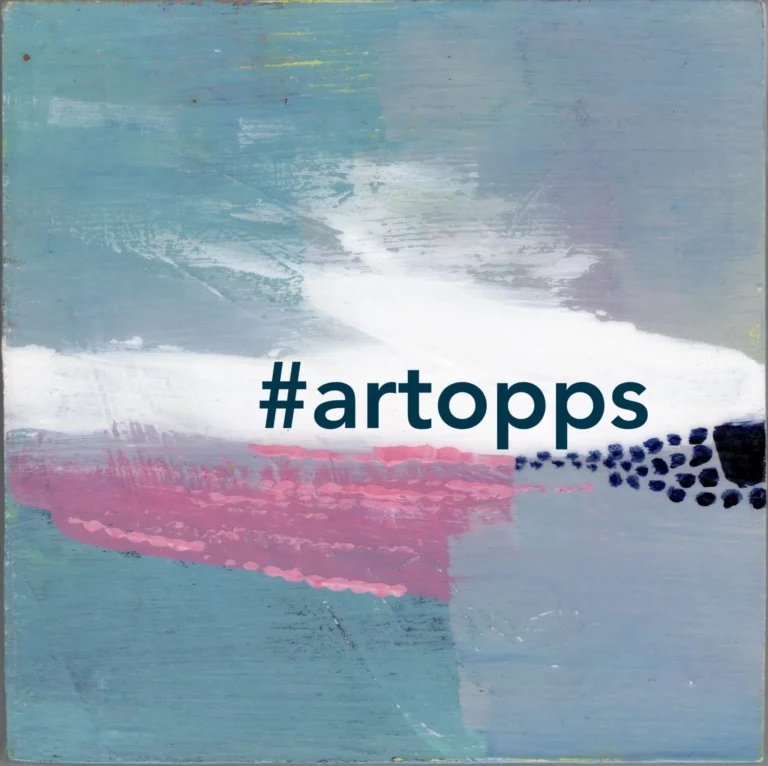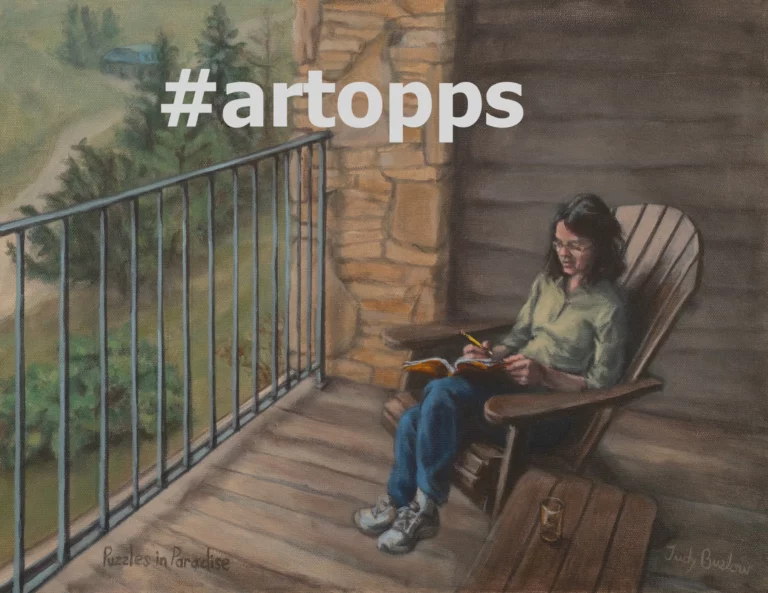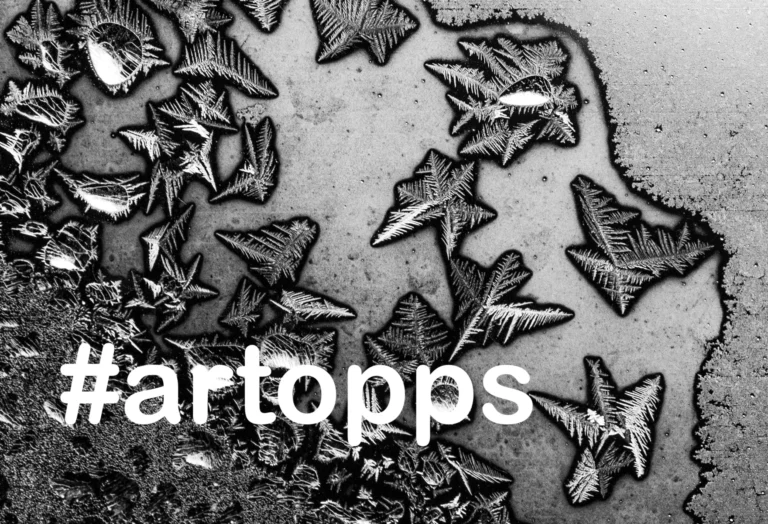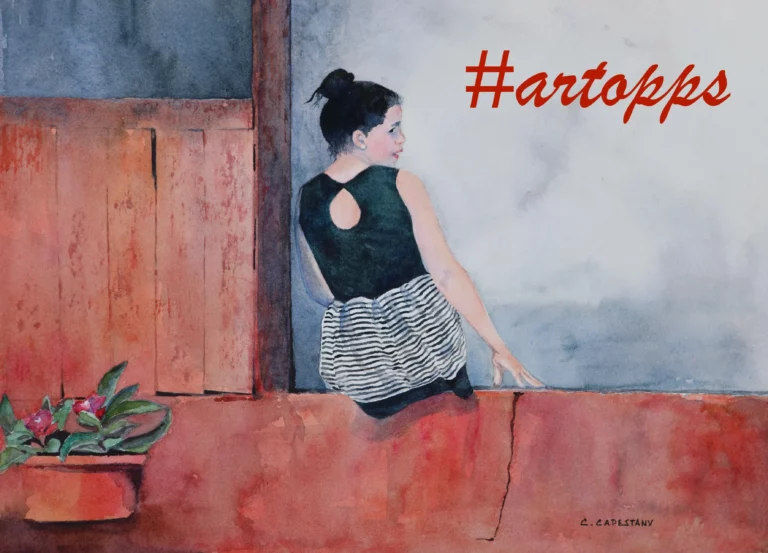Collage and Memory in Jill Brantley’s “Then”

Collage and Memory in Jill Brantley’s “Then”
Brown Payne for the Art League
Jill Brantley’s work “Then” won the Art League’s Best in Show award for the July 2023 Open Exhibit. For this article, I asked the artist questions about her processes, story, and inspirations for her work.
This piece, titled “Then” depicts a colorful living room, complete with a coffee table, chair, ceiling fan, and couch. Little objects including a flamingo, telephone, a weathered flag, newspaper, and picture frame ornament the living room, creating a convincingly homelike feeling. Coming through the door in a red dress and matching hat, a figure enters the cozy room with a shopping bag. All of these patterns and details each carry a special importance from the artist’s life “from the plastic cushion covers that my grandmother put on her sofa and chairs, the oh-so 50’s and 60’s shag rug, the blonde wood furniture and kidney shaped coffee table that was in my parent’s living room.” Some of the design even comes from the artist’s own personal life, with “the original curtain fabric that hung on my parent’s living room windows.” The attention to the memory of personal details shows strongly in this work, and was an important part in the creation of it. Including complementing oranges and blues and soft recognizable forms, Brantley creates a balanced composition that moves your eye throughout the piece and back again. Her use of collage gives the piece an atmospheric perspective, completing the hazy feeling of a memory.
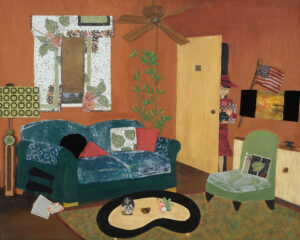
Brantley describes the inspiration for this work, recalling the many visits to her grandmother’s house when she was younger: “She would dress up when she went shopping and I couldn’t wait to see the purchases she returned with that were in lovely boxes from the stores that she had visited. This painting is an ode to a different era in time.” Discussing her process, Brantley begins by taking inspiration from photographs or magazines, and then personalizing the work using other materials: “I painted in various items such as the background, the couch, chair and rug, after which I began adding collage. As I am creating this type of painting, a narrative usually develops.” Brantley included details based on specific memories of her grandmother, uncle, and parents, which create the story inside this piece. The use of collage helps to propel the narrative of memory within her mind. In creating more representational assemblage artwork, Brantley realized that the role of found images was of paramount importance in her creative process: “Collage was essential in depicting childhood memories for me.”
Collage has a special role in the process of creating based on memory, because of the act of finding, cutting up, and reassembling media. Remembering and representing memory can be difficult, so the aid of found media is integral to the act of remembrance. Inspired by collagists like Romare Bearden or Henri Matisse, Brantley hopes to create works that continue a legacy of storytelling. Recently, Brantley has started experimenting with abstraction by using inks, but finds herself still incorporating reused material and images within her work: “I have come to realize that collage is an integral part of my creative process. I can’t seem to get away from it nor do I really want to.”
Can't get enough?
Sign up for our weekly blog newsletter, subscribe to our RSS feed, or like us on Facebook for the latest Art League news. Visit our homepage for more information about our classes, exhibits, and events in Old Town Alexandria, Virginia.


